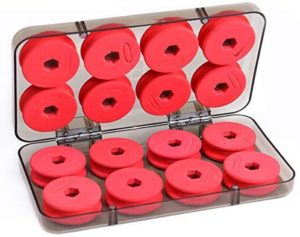How Long Does Fishing Line Last? Avoid the Snap Factor
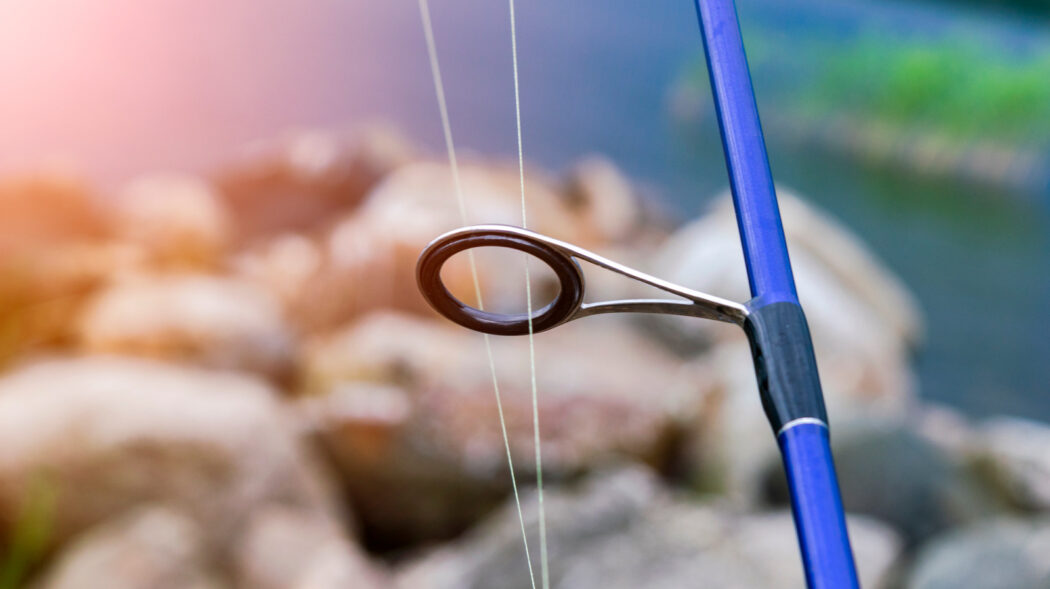
You’ve hooked that monster fish. The one you’ll take pictures of, and put on your profile wall. You know it’s big because it won’t budge, and it’s brought you three times around the boat (see also how to pass a fishing boat). The lunker is finally starting to come up, but finds the strength for one more run. You hold on tight as your rod bends over, and SNAP! It’s line failure, and you’re left with nothing but an imagined vision of your trophy fish. How long does fishing line last? How can we avoid this situation from ever happening to us?
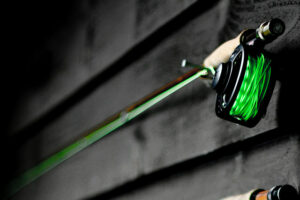
The Life Span of Fishing Line – 3 Different Lines
It didn’t seem right and proper to jump straight into the lifespan of fishing line without first going over the three main types of line.
Monofilament
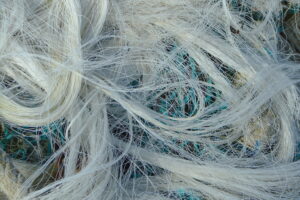 Mono means one, and so monofilament fishing line is 1 continuos strand of line. It is a synthetic fiber, often made of nylon. Mono as we call it, will actually stretch before it’s breaking point. Mono is rated at different test. Test describes the amount of force it would take to break the line. So 30lb test monofilament should break when 30lbs of force is pulled upon it. Note: Test doesn’t necessarily have anything to do with how heavy a fish you can catch.
Mono means one, and so monofilament fishing line is 1 continuos strand of line. It is a synthetic fiber, often made of nylon. Mono as we call it, will actually stretch before it’s breaking point. Mono is rated at different test. Test describes the amount of force it would take to break the line. So 30lb test monofilament should break when 30lbs of force is pulled upon it. Note: Test doesn’t necessarily have anything to do with how heavy a fish you can catch.
Flourocarbon
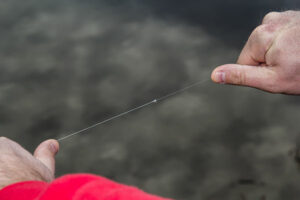 Very similar in appearance to monofilament, flourocarbon line is also one single strand. It’s made out of a different material than mono called polyvinylidene flouride. Flouro is known to be much harder to see in the water than monofilament, and has become popular used as a leader. It is a bit more rigid than mono line, which gives it more memory. This means it will keep the shape of the curls from the reel, twists, bends, etc. Memory is not a good thing when it comes to fishing line. The strength, and near invisible nature of Flourocarbon line can outweigh the negative features.
Very similar in appearance to monofilament, flourocarbon line is also one single strand. It’s made out of a different material than mono called polyvinylidene flouride. Flouro is known to be much harder to see in the water than monofilament, and has become popular used as a leader. It is a bit more rigid than mono line, which gives it more memory. This means it will keep the shape of the curls from the reel, twists, bends, etc. Memory is not a good thing when it comes to fishing line. The strength, and near invisible nature of Flourocarbon line can outweigh the negative features.
Braided Line
Made up of several strands of fiber woven together, braided line is well known for it’s strength. Braided line is constructed out of a man made fiber that feels very much like fabric. It can hold much more weight than mono or flouro, and does not stretch. It is also a much skinnier line, which allows for more length on your reel. Learn about best closed face reels here.
Different Types of Fishing Line Have Longer Shelf Life
I must point out before beginning that if you leave your line out in the sun and other elements, it will not last. It won’t matter what kind of line it is. Store your fishing line in a fishing line organizer or box. Light can harm mono and fluoro line over time, so keep it dark as well.
Fishing Line Organizers
It is critical to keep your fishing lines in an organizer before storing them in a dark spot after fishing.
Keep your fishing lines organized in this box which can hold up to 6 spools of fishing line.
This budget-friendly fishing line organizer can hold up to 10 spools per pack.
This fishing line organizer can hold up to 16 fishing lines without you breaking the bank.
The order of fishing line shelf life from longest to quickest goes as follows:
Braided
Braided line can last a human life time if properly cared for. Braided line has become popular to use as a backing, with monofilament or flourocarbon line attached and filling up the top part of the spool. This makes it easy to change the mono or flouro without having to replace a whole spool.
Fluorocarbon
Fluoro is known to last up to 4 times longer than the monofilament line. Properly cared for.
Monofilament
Mono fishing line can be used to hang pictures and is the quickest line to expire on the shelf.
Fishing Line Doesn’t have an Expiration Date
 There is no set date on mono or flouro line to tell you when it has likely gone bad. I personally would question any line I’ve had for over a year and a half. I also recommend checking your line all the time when fishing. I’ve seen brand new line fail because I didn’t notice a tiny nick. A general rule I use is that before I fish, I always check my line. When I’m fishing, I check my line everytime it’s made contact with anything other than my rod and reel. This means snags, abrasions from rocks, catching a fish, or any number of other situations. Checking your line frequently will minimize lost fish! If you are interested in expensive fishing rods, check this article.
There is no set date on mono or flouro line to tell you when it has likely gone bad. I personally would question any line I’ve had for over a year and a half. I also recommend checking your line all the time when fishing. I’ve seen brand new line fail because I didn’t notice a tiny nick. A general rule I use is that before I fish, I always check my line. When I’m fishing, I check my line everytime it’s made contact with anything other than my rod and reel. This means snags, abrasions from rocks, catching a fish, or any number of other situations. Checking your line frequently will minimize lost fish! If you are interested in expensive fishing rods, check this article.
If in Doubt do the Line Test!
You’ve hit that year and a half mark, and you’re wondering if you should use that stored monofilament on your upcoming fishing trip. You can always test your line. Securely tie one end of your line to any fixed object. Make sure the object you pick can withstand many more times the force you will put on the line. Let out about 20-30 feet of line and start pulling. If the line breaks well before the weight it should be able to handle, you know it’s bad and can toss it out. If the line holds, you’re in the clear to use it. CAUTION! When line snaps it can be dangerous! Applying force to still objects can also be dangerous. Take care if performing this test, and wear safety glasses at least. This test should not be performed by children! A great example of this method can be found at Trails.com.
How Long does Fishing Line Last under Extreme Conditions?
Special care should be taken with your line and all your equipment really, if you are fishing in extreme conditions. Freezing conditions as well as those of high heat can change the game, and are not covered in this article. Diamondfishing.com has some more info on line built to withstand extreme conditions.
Don’t get Wrapped up in Line
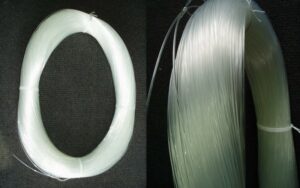 Extra fishing line doesn’t need to be stored long term. I suggest not keeping much around unless you fish everday, or make a living off the water. It’s good to pick some up before you head out on a trip, and if you have some left over great. You can use it next time. Just be sure to inspect your line all the time. If you’re not sure how old it is, do the line test. Think about switching to braided backing on your go to reels. It can cost a bit up front, but will save you some cash long term. It’ll also give you some extra length for that big one that wants to run. Good luck. Be safe, and Fish On!
Extra fishing line doesn’t need to be stored long term. I suggest not keeping much around unless you fish everday, or make a living off the water. It’s good to pick some up before you head out on a trip, and if you have some left over great. You can use it next time. Just be sure to inspect your line all the time. If you’re not sure how old it is, do the line test. Think about switching to braided backing on your go to reels. It can cost a bit up front, but will save you some cash long term. It’ll also give you some extra length for that big one that wants to run. Good luck. Be safe, and Fish On!
As an Amazon Associate, Fishermen's Angle earns from qualifying purchases. We get commissions for purchases made through links in this post.



